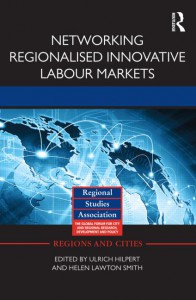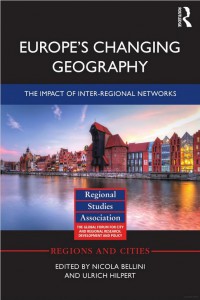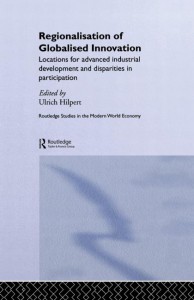Routledge Handbook of Politics and Technology
Edited by Ulrich Hilpert
© 2016 – Routledge. 492 pages | 38 B/W Illus.
This handbook provides a comprehensive global survey of the politics of technology. Written by an outstanding line up of distinguished scholars in the field
, the handbook covers all aspects of the relationship between politics and technology including:
- Demand and support for new technologies and innovation by the state
- The effects of technology policies
- Technology development and innovation difference between various countries and regions
- Policy instruments and techno-industrial innovation
- Dynamism and change as outcomes of government policies
- Driving forces for science and innovative development
Forming the basis of this handbook are examples of regional development, country studies and a rich variety of technologies, as well as topical issues such as divergent political interests in relation to technology and the economic exploitation of technologies. Employing a comparative and interdisciplinary approach in order to analyse the interplay between government activities and the development of new technologies, this handbook will be an invaluable resource for all students, scholars and practitioners working in the politics of technology, public policy and policy analysis.
“Regionalisation of Globalised Innovation: Locations for Advanced Industrial Development and Disparities in Participation”
In recent years there has been growing discussion about the role that regions play in global processes of innovation and advanced economic activity. Regions have come to be seen as actors, searching for enterprises, investments and new firms. The move towards globalisation and networking has also intensified both the regional concentration in the advanced industrialised countries of Europe and in the US and the orientation of these locations towards global networks. While processes of innovation are increasingly realised globally, they can also take a highly regionalised expression. This book sets the global networks that link regions against the the local aspects of innovation in order to show how and why this happens. With contributions from international experts based on a rich source of research data, the book examines local ‘Islands of Innovation’ where research and industrial expertise are concentrated, along with areas where traditional industrial regions have passed through a process of innovative restructuring.
There is also a discussion of the innovative development of old industrial regions and the centripetal forces of networking innovation in Europe against a peripherisation of both southern and eastern central European countries. The critical role of government policies and the different paths for innovation is highlighted in order to develop an understanding of the opportunities for old and traditional regions and for peripheral regions. This book will be essential in our understanding of current processes and their roots in earlier periods of development. It also shows how innovation and advanced industrial development are not merely economic processes by considering non-economic conditions in government and society.
 Networking Regionalised Innovative Labour Markets
Networking Regionalised Innovative Labour Markets
Edited by Ulrich Hilpert, Helen Lawton Smith
Routledge – 2011 – 206 pages
A map which shows where innovation is clustered worldwide is also a map of the location of the highly skilled and talented labour. New technologies, their creative applications or synergy across different areas of scientific research or technology development always create opportunities for the employment of particularly creative labour. This book explores the kinds of institutions and structures which need to exist to make sure that such skills are both offered and employed in particular ‘islands of innovation’.
Networking Regionalised Innovative Labour Markets illustrates the theme of how existing concentrations of skills in scientific, technological and managerial elites are reinforced through inter-regional mobility using exemplars from a range of countries and regions. These include the US, UK, Italy, Germany, and Central and Eastern Europe.
The book’s originality lies in its in-depth assessments of the factors associated with the extent to which some regions hold their positions in networked islands of innovation. It is shown that those islands of innovation that attract highly skilled workers from abroad, particularly those from foreign islands of innovation, perform better for example in the US, Italy and the UK. In contrast, even the most innovative Czech regions tend to lose the highly skilled workers vis-à-vis the most innovative regions of the world, mainly to regions in the USA.
 Europe’s Changing Geography -The Impact of Inter-regional Networks
Europe’s Changing Geography -The Impact of Inter-regional Networks
Edited by Nicola Bellini, Ulrich Hilpert
European macro-regions, Euroregions and other forms of inter-regional, cross-border cooperation have helped to shape new scenarios and new relational spaces which may generate opportunities for economic development, while redefining the political and economic meaning of national borders. This book is based on a number of key case studies which are crucial to understanding the complex web of political, economic and cultural factors that shape the heterogeneous picture of Europe’s new geography.
This book provides a fresh view on this phenomenon, with a realistic approach shedding light on its complexity as well as on its ambiguities. The new macro-regions are interpreted with an approach recognizing the importance of institutionalization, but also their flexible configuration and “blurred” borders. The book also raises the issue of credibility and legitimacy, arguing that inter-regional cooperation has to be removed from the foggy realm of the exchanges between local political and bureaucratic elites in order to be clearly and concretely motivated, and functional to key strategic objectives of the regions. Finally, the authors suggest a complementarity between relations based on proximity and wider (possibly global) networks where some territories, and especially metropolises, find opportunities based on “virtual” proximity.
Europe’s Changing Geography provides a substantial re-appraisal of a key phenomenon in the process of European integration today. It will be of interest both to scholars of the political economy of European regionalism and to practitioners.
For further information, please click here.


